What’s in a Name?
Ephrata is a derivation of several words that appear in the Bible, including Ephrath, Ephrathah and Ephratah. Ephrath relates to members of the Israelite tribe of Judah. The Bible also refers to Ephrathah, the wife of Caleb and whose son, Salma, is regarded as the founder of Bethlehem, hence in ancient times, the town was referred to as Bethlehem Ephrathah.
A Most Charismatic Man
In 1720, Johann Conrad Beissel, who was a baker by trade, arrived in America in search of religious freedom. After making his way from Boston to Philadelphia, he set off for the wilderness that would become Lancaster County. For a time, he lived along the Conestoga River, where he and another newcomer provided schooling to German-speaking children.
In 1722, he moved south to Maryland, where he became a student of communal living and the beliefs of Seventh-Day Baptists. When he returned to Lancaster, he traveled the countryside teaching and preaching, ultimately attracting a diverse following. In 1732, he settled in northern Lancaster County, where he founded a settlement along the banks of the Cocalico Creek that he named Mystic Order of the Solitary.
The settlement, which came to be known as Ephrata, was composed of celibate members, who lived and worked within the confines of the distinctive Germanic log, stone and half-timbered buildings that served proscribed purposes. Married householders — as many as 200 in the settlement’s heyday — lived outside its borders.
By the 1750s, nearly 80 brothers and sisters lived on-site; their disciplined lifestyle revolved around prayer and work. They subsisted on a sparse diet and limited sleep. Daily prayer services were conducted from 9 p.m.-12 a.m. and again from 2-5 a.m. Worldly possessions were non-existent, and the celibates wore a unisex uniform of white robes.
Setting the Standard for Printing
Members of the Ephrata settlement were very industrious. The Print Shop was state of the art. Its claim to fame involved a book that was originally published in Holland in 1660. Called Martyrs Mirror, it contained stories and testimonies of Christian martyrs and pacifists, namely the Anabaptist Amish and Mennonites who eventually made their way to Pennsylvania. Ephrata took on the job of translating the 1,500-page tome (Dutch to German), as well as printing and binding the 1,300 copies it produced. The job, which was carried out by 15 men, took three years to complete.
Another high-profile assignment came at the request of Ben Franklin and the Continental Congress — linguist Peter Miller, who succeeded Beissel upon his death in 1768, was asked to translate the Declaration of Independence into seven languages for the benefit of foreign heads of state. Miller completed the assignment in two years.
Birthplace of American Folk Art
Members of the settlement were also very creative. The distinctive frakturs, which combined German calligraphy and decorative motifs, are considered to be America’s first form of folk art.
The Ephrata Sound
The talents of Ephrata’s members extended to music, as more than 1,000 original compositions are credited to the settlement, with many written by Beissel. Today, the tradition of the Cloister’s unique, ethereal, a cappella, four-part harmony music is carried on by members of the Ephrata Cloister Chorus — under the direction of Martin Hinkley — who perform not only during special events at the Cloister, but also across the region.
Aiding the Revolution
Following the Battle of the Brandywine (the longest single-day battle of the Revolutionary War) on September 11, 1777, George Washington sent 500 wounded soldiers to Ephrata. In need of paper for gun wadding, the Continental Army also confiscated a wagon load of paper — ironically, it was filled with unbound pages of Martyrs Mirror. Ephrata’s buildings were transformed into a makeshift hospital. Despite the care rendered to the wounded soldiers, typhus spread through the settlement. In order to halt the spread of disease, two buildings were burned to the ground. In total, more than 260 people — soldiers and residents — died at Ephrata. Many of those who died were buried at what is now Mount Zion Cemetery.
The End Creates a New Beginning
With Beissel’s death in 1768, the settlement seemed to have lost the glue that held it together. The last celibate member passed away in 1812. The remaining married members associated themselves with a German Seventh-Day Baptist congregation that used the Ephrata buildings for services until 1934.
In 1941, the settlement at Ephrata was sold to the state. It was restored and is now operated by the Pennsylvania Historical & Museum Commission (in partnership with Ephrata Cloister Associates) as the Historic Ephrata Cloister.
A Borough
Back in the olden days, the English referred to fortified towns as boroghs and hills as beorgs. The Germans called fortified castles burgs. The Norse word for wall was borg. In the United States, certain states, such as Pennsylvania, refer to incorporated municipalities that are smaller than cities as boroughs. In Lancaster County, Ephrata is the largest such municipality.
It’s Not Exactly Pikes Peak, But …
Ephrata is the only town in Lancaster County that is able to say it has a mountain.
Lifestyles of the Rich & Famous
Ephrata Mountain was the home of the Mountain Springs Hotel. Built in the 1840s by Joseph Konigmacher, the hotel became known far and wide for its elegant interiors and healing mineral waters. The hotel, which could accommodate 500 guests, became a summer playground for the rich and famous. After Konigmacher’s death in 1861, the hotel remained in operation (under a succession of owners); in 1882 it was purchased by Daniel S. Von Neida. After his death in 1920, his four sons assumed ownership.
The Psychic Connection
Ethel Riley Post-Parrish, the leader of Camp Silver Belle, a group of spiritualists with roots in Florida, liked Ephrata and turned her sights to the Mountain Springs Hotel, which was owned solely by Harry Von Neida. Camp Silver Belle, whose name honored Post-Parrish’s native spiritual guide, struck a deal with Von Neida and purchased the property in he mid-30s. The clientele included psychics, mediums and clairvoyants. Seances were held on a regular basis. Although Post-Parrish died in 1960, Camp Silver Belle, which later became known as the Temple of Truth, maintained its presence at the former hotel. However, it fell into disrepair and by 1988 was uninhabitable. An auction, which attracted quite a crowd, was held in 1991. In 1999, the Ephrata Economic Development Corporation purchased the property with the goal to restore the hotel. Unfortunately, nearly a century of neglect deemed that impossible. The hotel was razed, and new businesses took over the property.
A Community Hospital
Camp Silver Belle launched a small on-site hospital in 1937. Named Stephan Memorial Hospital, it honored Ephrata residents John Stephan and his wife. In 1940, a charter was issued to the hospital, at which time it became known as Ephrata Community Hospital. By 1949, rapid growth deemed it necessary to move the hospital to its present-day location at the intersection of routes 322 and 272. In 2013, the hospital became affiliated with WellSpan Health and today is known as WellSpan Ephrata Community Hospital.
There She is …
Ephrata’s own Evelyn Ay was crowned Miss America in 1953. Her route to the crown included being named Miss Ephrata Fair, the Tobacco Queen of Lancaster County and Miss Pennsylvania. Her fans had to follow the pageant via the radio and newspapers. It wasn’t until 1954 that it began to be televised. When she returned home to Ephrata, nearly 56,000 people turned out to greet her. She died in 2008.
The Water Mystique
Who knew that a bottle of water would become an accessory in the 21st century! Lancaster was hip to spring water long before that happened. We had two Ephrata-based companies to thank for that: Cloister Spring Water and Ephrata Diamond Spring Water. Back in the late 90s, food and beverage giants were prepping to go to battle over water, which was beginning to make inroads in the popularity of carbonated drinks. In 1998, Ephrata Diamond, whose products were distributed in Pennsylvania, Maryland, Delaware and New Jersey, was acquired by California-based McKeesen Water Products, a move that would position the company to claim 2/3 of the national bottled-water market. A year later, Cloister, whose market was the Middle Atlantic region, was acquired by Suntory, a global food and beverage company (No. 2 in the sale of water products nationwide). FYI: Richard Hess, Diamond Spring’s last president, was inducted into the International Bottled Water Association’s Hall of Fame in 2003.
Take a Dip
Speaking of water, the Ephrata Community Pool is the oldest, continuously operated pool in Lancaster County. This summer marks its 88th year of operation. Located in Grater Community Park and operated by the borough, the pool complex, consisting of a fun pool and a competition pool, was remodeled several years ago to include zero-depth entries, flume slides, climbing walls and more. It has hosted the year-end Doggy Days of Summer event since 2013.
Life Ready Graduates
Realizing that the one-size-fits-all instructional model was not of benefit to Ephrata’s diverse student population, the Ephrata Area School District went to work on a concept it calls the Life Ready Graduate project that will “help students develop a variety of knowledge, skills and dispositions beyond the state standards.”
“High stakes tests on a narrow set of criteria are not the best set of predictors for success in life,” theorizes Dr. Brian Troop, the district’s superintendent. In developing the framework for the project, the district sought feedback from alumni on how well they were prepared for the real world. Business leaders were also consulted on the qualities they deemed important when hiring new employees. The project was formally endorsed by the school board in 2017.
Speaking of Mind & Body
The title of Mr. Universe 1978 went to Ephrata native Mike Mentzer.
Take Me to the Fair
The Ephrata Fair celebrated its 100th edition last September, making it the oldest farmer’s fair in Lancaster County. Its renown also extends statewide, as it is regarded as the largest street fair in Pennsylvania.
The fair’s roots date back to 1919, when area businesses partnered to sponsor a one-day celebration through which the area’s World War I
vets would be honored. The event was a huge success and the following year, a harvest celebration was added. In 1932, the Ephrata Farmers Day Association was incorporated to oversee the fair. Soon, a parade joined the festivities, as did a midway. Tent City, which takes over Grater Community Park, is the site of the agricultural competitions and exhibits, as well as other special events. This year’s dates are September 24-28.
Speaking of Agriculture
There are so many produce stands along Route 322 that it is affectionately referred to as Cantaloupe Alley.
A Manufacturing Town
During the 19th and early 20th centuries, Ephrata was known for its manufacturing prowess. Foundries, a coal plant, textile factories and tobacco warehouses abounded. In 1880, Ephrata was home to 18 cigar factories.
The Historical Society of the Cocalico Valley
Founded in 1957, The Historical Society of the Cocalico Valley has grown dramatically over the last 62 years. Part of its growth can be attributed to the fact that historical societies in smaller towns across the valley no longer exist, and their collections were bequeathed to the Cocalico Valley organization, which now preserves and interprets the history of the northern end of the county. Its current exhibit, Fresh Findings From the Past, features acquisitions/donations from the past 10 years.
The society maintains the Theodore R. Sprecher Museum, which makes its home in the Connell Mansion. Built in 1868 by Moore Connell and his wife, Rebecca, it was home to the Connells and their five daughters, all of whom never married and lived their entire lives in the home. The last Connell sister, Nora, died in 1961. The historical society acquired the property after her death. Each of the three floors is filled with exhibits that tell the story of the Cocalico Valley.
Next door, you’ll find the William & Jemima Brossman Library & Research Center. The center is home to a complete set of copies of the Ephrata Review for the years 1878-2005. A grant enabled the society to create microfilm files of the paper. The center is also home to a climate-controlled room in which special and rare documents are stored.
Working Out
The Ephrata Rec Center was founded in 1951. Originally located in an armory building, it moved to its present location in 1978. Building the 65,000 square-foot facility was a community effort. Today, the center serves 11,000 members/participants on an annual basis.
A Library
The Ephrata Public Library traces its beginnings back to 1917, when 35 books were placed in the Washington Avenue High School. Ten years later, an appeal for books resulted in an impressive response. It remained open to the public until 1947, when for a variety of reasons, it was forced to close. When the historical society took over the Connell Mansion, it invited the library to resume operations there. Two years later, the library became part of the county’s library system, which caused interest and use to escalate. In 1967 it moved to a location on West Fulton Street, where it remained until 1995, at which time it moved to its present location on South Reading Road.
The Green Dragon
The Green Dragon has been the go-to place for just about anything you can think of for the past 87 years and judging by the traffic that nearly gridlocks downtown Ephrata on any given Friday (the only Friday it closes is if Christmas falls on it), it’s not going anywhere. In fact, there’s a saying that describes its allure: “If you can’t buy it at the Green Dragon, it chust ain’t for sale.”
The property has a tale all its own. At one time, it was home to an auto-repair garage (actually, it was located in what is now called Building 7). During Prohibition, it was a speakeasy called Shreck’s. That all ended when it was raided. After that, it became a favorite destination for music and dancing. In 1932, Noah Burkholder bought it and transformed it into a farmers market.
Legend has it that he saw a sign with a green dragon on it during a trip to New Jersey, and it struck a chord. It changed hands in 1961, when Larry Loose and William Rohrbach purchased it.
Today, the Green Dragon, which is one of the largest farmers markets on the East Coast, is owned and operated by William and Sandy Rohrbach and their three children. Their daughter, Sally Bushong, told the Ephrata Review on the occasion of the Green Dragon’s 85th anniversary that the clientele is an even mix of locals and tourists. That’s reflected in its 40,000 Facebook followers who hail from across the world.
Embracing Technology
William Brossman was a fertilizer salesman. Working around farmers’ schedules made for long work days. Brossman saw the new-fangled telephone as an answer to his hectic schedule. The only problem was the telephone operators in Lancaster didn’t maintain a schedule that meshed with Brossman or his clients. So, he founded his own company, the Denver & Ephrata Telephone & Telegraph Company in 1911. The company grew into a family affair, as two of Brossman’s daughters, Bertha and Anne, served as presidents of the company. The company was sold to Windstream in 2009.
Long Live the Movie House
Like many of Lancaster’s small towns, Ephrata was home to a downtown movie theater. Unlike those same small towns, Ephrata’s theater is still in operation. Called The Main, it opened in 1938. The art deco marvel had a seating capacity of 800. Over the years, it fell into a state of disrepair and closed in 1990. Recognizing its value, the architects of the Brossman Business Center incorporated it into the design of the complex. Many of the art deco artifacts were restored and helped to recapture the ambiance of the original Main. The theater reopened in 1993.
Steve and Karen Brown, who operated the (now-closed) restaurant, Lily’s on Main, assumed the lease, but despite innovations such as live concerts and serving alcohol in the theater, falling attendance and rising costs due to changing technology made operating the theater a challenge. In 2017, Penn Ketchum, the managing partner of Penn Cinema, and his wife, Aimee, agreed to take over the lease of what is now known as The New Main. Over the past two years, they have upgraded the 2-screen theater yet maintained its art deco ambiance.





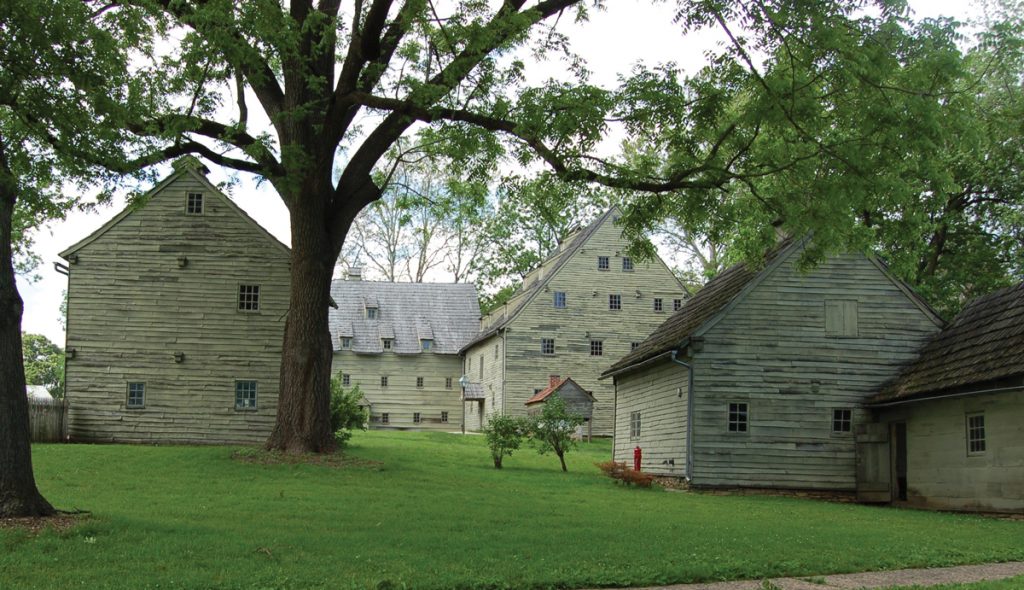
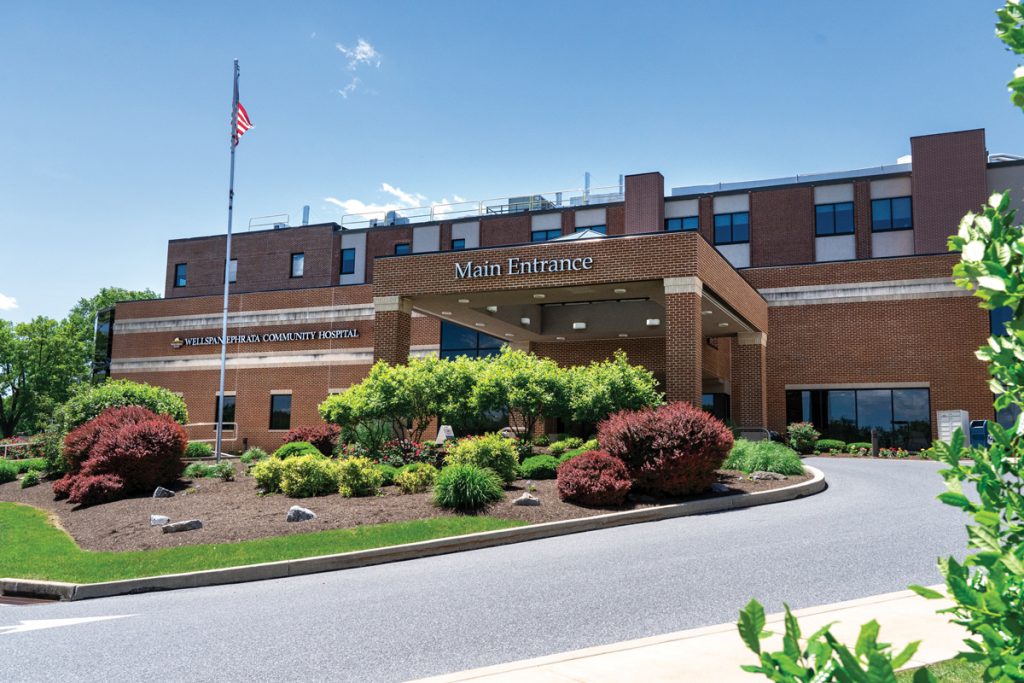

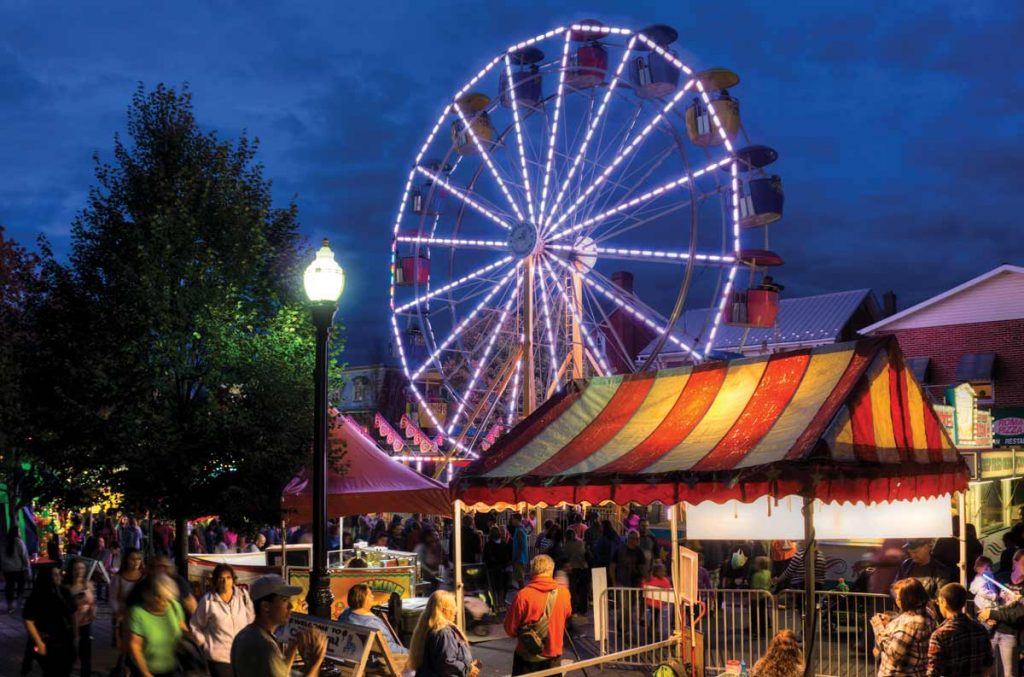

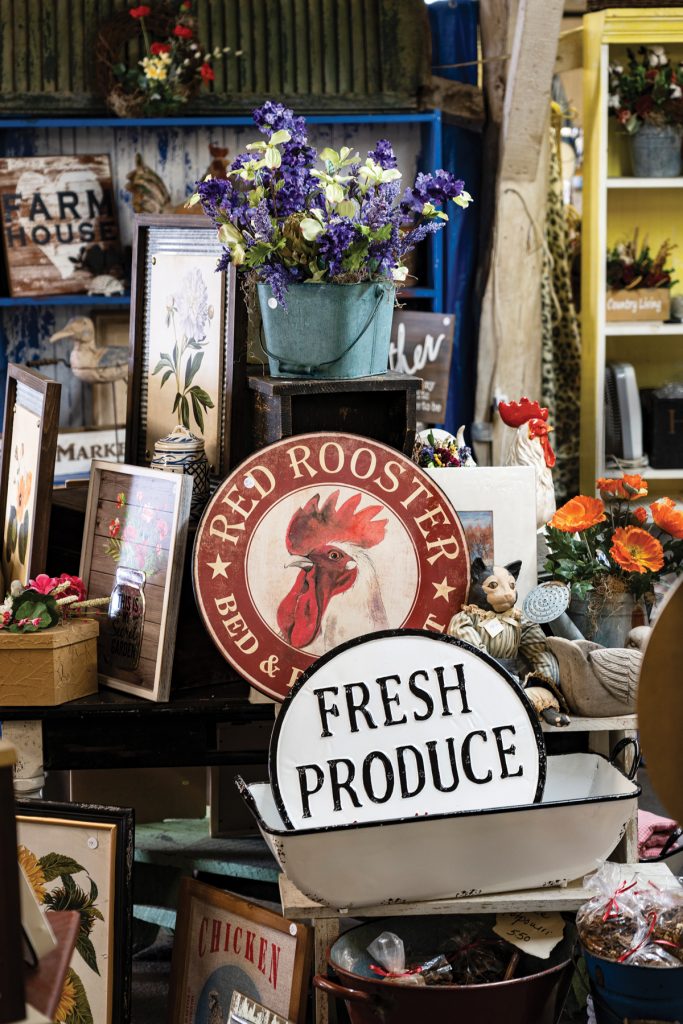
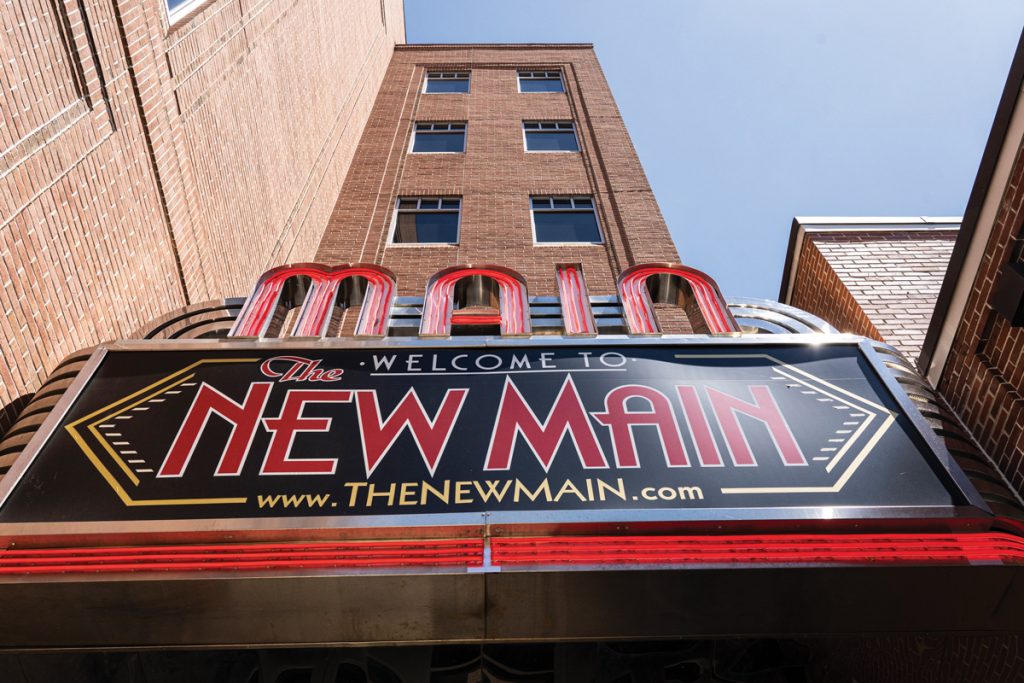
SHARE
PRINT